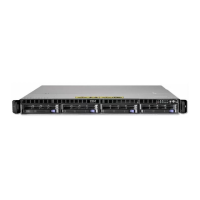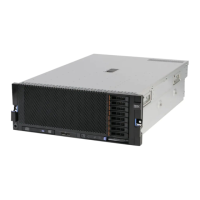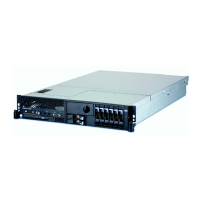7026 Model H80 CEC Drawer
The Model H80 includes the Central Electronics Complex (CEC) Drawer with an I/O Drawer. For technical
information on the I/O Drawer, see “I/O Drawer 5 EIA” on page 79.
Dimensions
Height 218 mm 8.58 in. 5 (EIA Units)
Width 445 mm 17.5 in.
Depth 820 mm 32.3 in.
Weight
Minimum configuration 41 kg 90 lbs.
Maximum configuration 52 kg 115 lbs.
Electrical
Power source loading typical in kVA 0.32
Power source loading maximum in kVA 0.48
Voltage range (V ac) 200 to 240
Frequency (hertz) 50 or 60
Thermal output (typical) 1025 Btu/hr
Thermal output (maximum) 1536 Btu/hr
Power requirements (typical) 300 watts
Power requirements (maximum) 450 watts
Power factor 0.95
Inrush current¹ 40 amps
Maximum altitude² 2135 m (7000 ft.)
Temperature Requirements² Operating
10 to 40°C
(50 to 104°F)
Non-Operating
10 to 52°C
(50 to 125.6°F)
Humidity Noncondensing Operating Non-Operating
Without tape drive 8 to 80% 8 to 80%
With tape drive 20 to 80% 8 to 80%
Wet Bulb Requirements
Without tape drive 27°C (80.6°F) 27°C (80.6°F)
With tape drive 23°C (73°F) 27°C (80.6°F)
Noise Emissions³ Operating Idle
With H80 CEC Drawer only
L
WAd
5.8 bels 5.8 bels
L
pAm
N/A N/A
<L
pA
>
m
45 dBA 45 dBA
Impulsive or prominent discrete tones No No
Noise Emissions³ Operating Idle
With H80 and Primary I/O Drawer
L
WAd
6.2 bels 6.2 bels
L
pAm
N/A N/A
<L
pA
>
m
48 dBA 48 dBA
Impulsive or prominent discrete tones No No
Install/Air Flow Clearance Maintenance of proper service clearances should allow proper air flow.
Service Clearance (See service clearances for the 7014 T00 Rack)
1. Inrush currents occur only at initial application of power, no inrush occurs during normal power off-on cycle.
2. For altitudes above 915 meters, the maximum temperature limit is derated by 1 degree C for every 137 meters of
elevation above 915 meters.
3. See “Noise Emission Notes” on page 336 for definitions of noise emissions positions.
Chapter 2. Physical Characteristics of Systems 77

